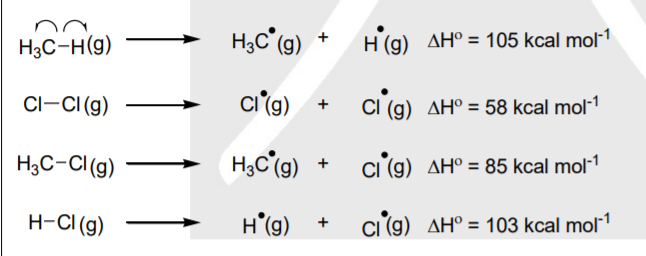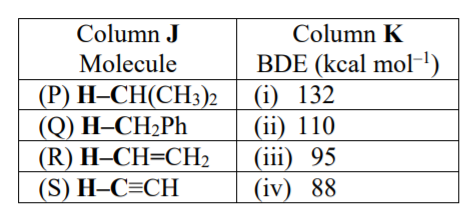Bond breaking releaser energy whereas bond formation absorbs energy
FALSE
Correct statement:Bond breaking absorbs energy whereas bond formation releases energy.
Topper's Solved these Questions
- BOOK - FULL MARKSCHAPTER - TYPES OF CHEMICAL REACTIONSEXERCISE - Additional question solved (Assertion and Reason)12videos
TYPES OF CHEMICAL REACTIONS
- BOOK - FULL MARKSCHAPTER - TYPES OF CHEMICAL REACTIONSEXERCISE - Additional question solved (Short answer questions:)27videos
TYPES OF CHEMICAL REACTIONS
- BOOK - FULL MARKSCHAPTER - TYPES OF CHEMICAL REACTIONSEXERCISE - Additional question solved (Match the following.)6videos
TYPES OF CHEMICAL REACTIONS
- BOOK - FULL MARKSCHAPTER - SOLUTIONSEXERCISE - ACTIVITY1videos
SOLUTIONS
Similar Questions
Knowledge Check
- Question 1 - Select One
Energy is released during the formation of
AHydride ionBOxide ionCFerrous ionDFerric ion - Question 2 - Select One
Assertion. The roman ~ P bond carries a great deal of energy, and is called energy-rich bond.
Reason. Its formation uses a large amount of energy and its breakdown releases the corresponding amount of energy.AIf both Assertion and Reason are true and the Reason is a correct explanation of the Assertion.BIf both Assertion and Reason are true but Reason is not a correct explanation of the Assertion.CIf Assertion is true but the Reason is false.DIf both Assertion and Reason are false. - Question 3 - Select One
Assertion (A): Enthalpy of formation of HCl is equal to bond energy of HCl.
Reason (R ): Enthalpy of formation and bond energy both involve the formation of one mole of HCl from the elements.AA and R both are correct, and R is correct explanation of ABA and R both are correct,but R is not the correct explanation of ACA is true but R is falseDA and R both are false.
The amount of energy required to break a bond is same as the amount of energy released when the same bond is formed. In gaseous state, the enrgy required for hololytic cleavage of a bond is called Bond Dissociation Energy(BDE) or Bond Strength. BDE is affected by s-character of the bond and the stability of the radicals formed. Shorter bonds typically stronger bonds. BDEs for some bonds are given below:

Correct match of the C-H bonds(shown in bold) in column J with their BDE in column K is View Solution
View SolutionThe amount of energy required to break a bond is same as the amount of energy released when the same bond is formed. In gaseous state, the enrgy required for hololytic cleavage of a bond is called Bond Dissociation Energy(BDE) or Bond Strength. BDE is affected by s-character of the bond and the stability of the radicals formed. Shorter bonds typically stronger bonds. BDEs for some bonds are given below:

For the following reaction
CH4(g)+Cl2(g)light−−→CH3Cl(g)+HCl(g)
the correct statement isView SolutionThe bond energy is the energy required to
View SolutionThe bond energy is the energy required to
View SolutionThe bond energy is the energy required to
View Solution

